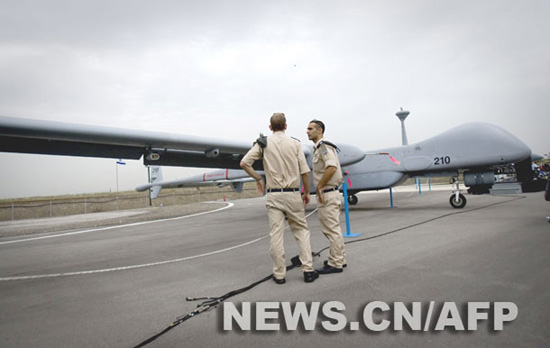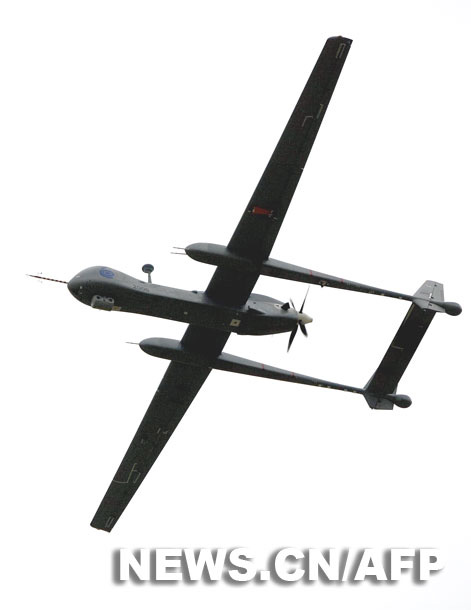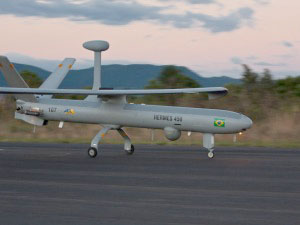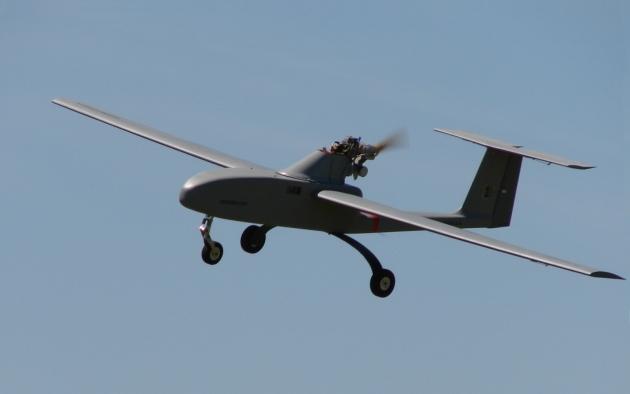




Wolverine escribió:Me parece que uno de los principales basamentos de un UAV es su discrecionalidad, se entienden las grandes dimensiones debido a la autonomía que se requiere y etc. pero, qué tan funcional es un UAV de esas características en un medio ambiente hostil y verdaderamente defendido?, es demasiado grande, y no es que el predator sea pequeño tampoco precisamente, me imagino que al final el desarrollo continuo los hará más pequeños, más autonomos y más furtivos, por lo pronto es considerablemente grande



 Uyyy... me la pones difícil, tocaría buscar en todo el tema de nuestras Fuerzas Armadas para hallar la foto de Marandúa donde se ve a un grupo de la FAC con dicho bicho posando para una revista.
Uyyy... me la pones difícil, tocaría buscar en todo el tema de nuestras Fuerzas Armadas para hallar la foto de Marandúa donde se ve a un grupo de la FAC con dicho bicho posando para una revista.





Do interior de um abrigo (shelter) especialmente montado para operações militares na Base Aérea de Santa Maria (RS), pilotos da Força Aérea Brasileira (FAB) começaram a escrever, neste ano, mais um importante capítulo na história da instituição. Controlado por intermédio de sofisticados computadores e sistemas de enlace de dados, essas aeronaves realizarão diversificadas missões em áreas para isso reservadas.
O treinamento faz parte do projeto de veículos aéreos não-tripulados (VANT), iniciado em dezembro do ano passado com a criação de um grupo de trabalho para estudar a implantação desse sistema na FAB.

O programa do BQM-1BR foi executado há já algum tempo e envolvia algumas características interessantes, como por exemplo o fato de que sua turbina também é de projeto (CTA) e construção (CBT) nacionais.
De estrutura convencional e construção metálica, este RPV mede 3,89m de comprimento(diâmetro da fuselagem: 28 cm) e 3,38m de envergadura, pesando, na decolagem, 92,5 Kg.
A propulsão era assegurada por uma microturbina nacional "Tietê", motor tipo CFJ de aproximadamente 30 Kg de empuxo. Lançado na decolagem por uma catapulta ou com a ajuda de um foguete auxiliar, o BQM-1BR atinge 530 Km/hora ao nível do mar e podia subir até 6500 metros de altitude.
Seu tempo de vôo era de 45 minutos e no pouso ele descia sobre um patim que se abria sob a fuselagem, podendo ser reutilizado várias vezes.





WikiLeaks: Colombia began using U.S. drones for counterterrorism in 2006
By Karen DeYoung, Wednesday, March 23
The Colombian military began using U.S.-supplied surveillance drones for counterterrorism and counter-narcotics operations in 2006, according to a classified State Department cable released Wednesday by WikiLeaks. The small, ScanEagle unmanned aircraft transmits real-time video of stationary and moving targets. According to the December 2006 cable from then-U.S. Ambassador to Colombia William B. Wood, the aircraft initially were to be used “to support U.S. hostage rescue efforts and assist” the Colombian military’s pursuit of guerrilla leaders.
“But it promises to be equally useful for combat against terrorists and in riverine drug interdiction,” Wood wrote. The cable, which referred to a “test package” of drones that arrived in Colombia in July 2006, called them a “potentially high-impact new addition” to U.S.-Colombian intelligence cooperation. It was not clear from the cable whether the drones were maintained by U.S. military forces in Colombia or given to that country’s armed forces as part of the multibillion-dollar military aid program there.
ScanEagles, which are four feet long with a 10-foot wingspan, are launched by a hydraulic catapult system and have no need for runways. Manufactured by Boeing, they were first deployed in 2005 by the U.S. Navy and Marines for intelligence-gathering in and around Iraq.
They have been used in Afghanistan by both U.S. and Canadian forces, and by the U.S. Navy in counter-piracy operations. Wood wrote that the drones “have proven useful before, during, and after strikes against the FARC,” or Revolutionary Armed Forces of Colombia, the main guerrilla group. He described them as in use by all branches of the Colombian military.
“When a UAV ‘pilot’ flew by chance over a truck unloading FARC fighters, and the [Colombian Air Force] happened to have a bomber available nearby,” he said, “an aerial assault was launched within 30 minutes.” In another incident, a drone camera “caught two vehicles being loaded with coca,” and a helicopter gunship was dispatched to destroy them. The cable described the drones’ ability to provide Colombian army forces with “realtime, bird’s eye” views of military assaults, and to track drug traffic along rivers for interdiction by the Colombian navy.



Usuarios navegando por este Foro: ClaudeBot [Bot] y 0 invitados